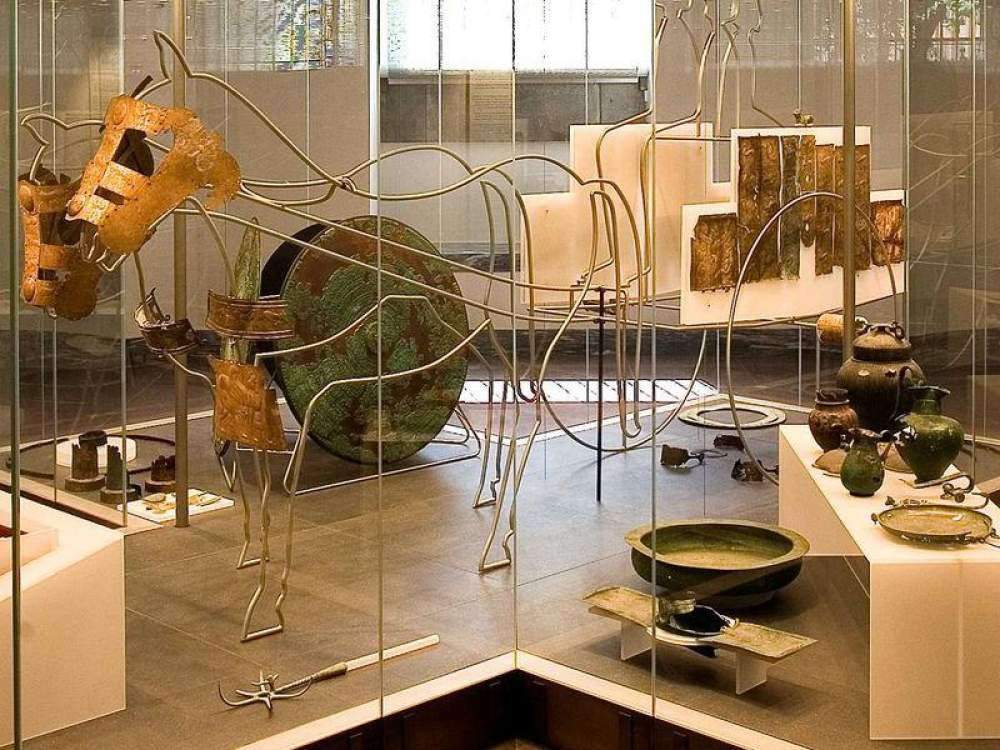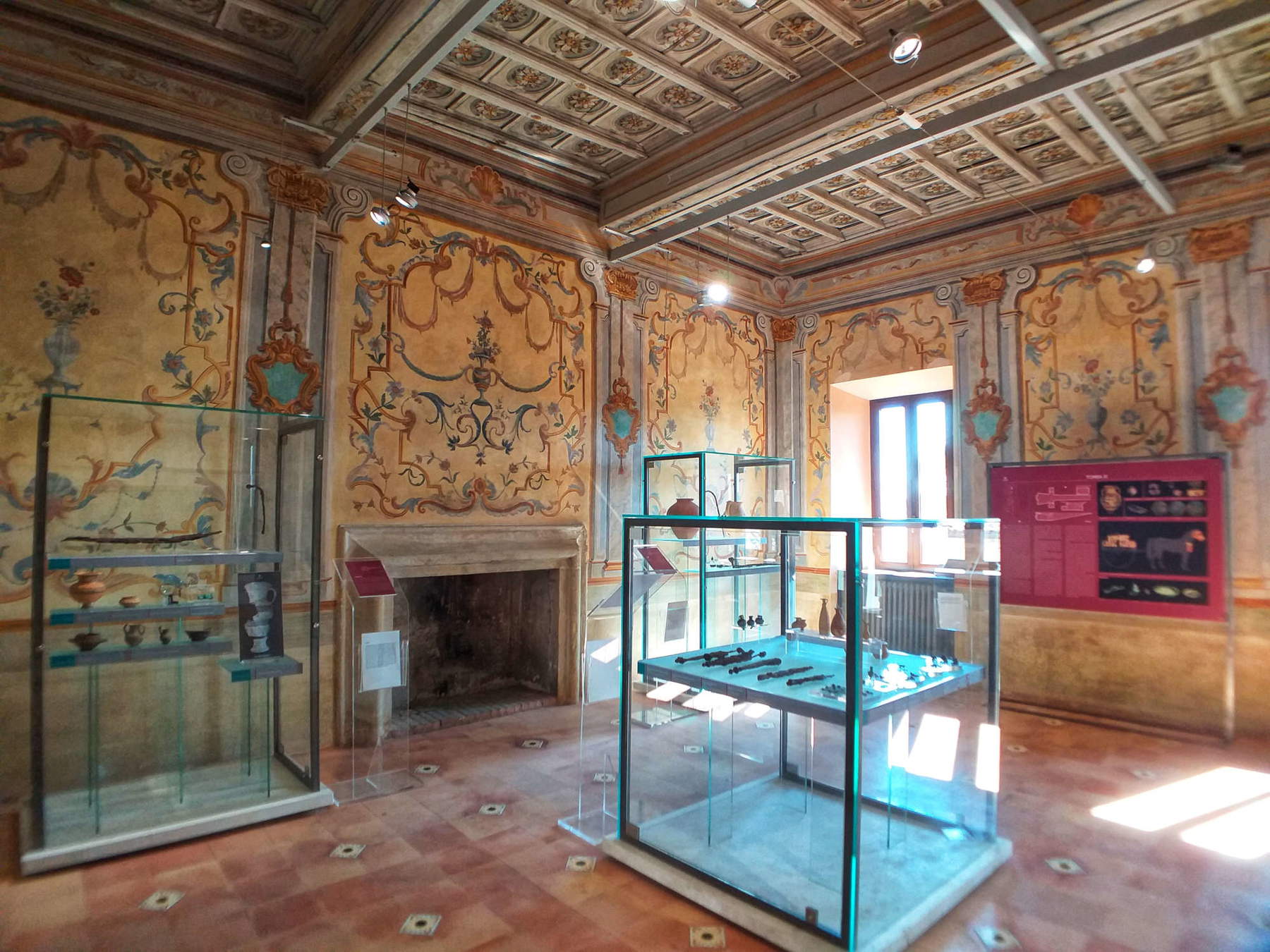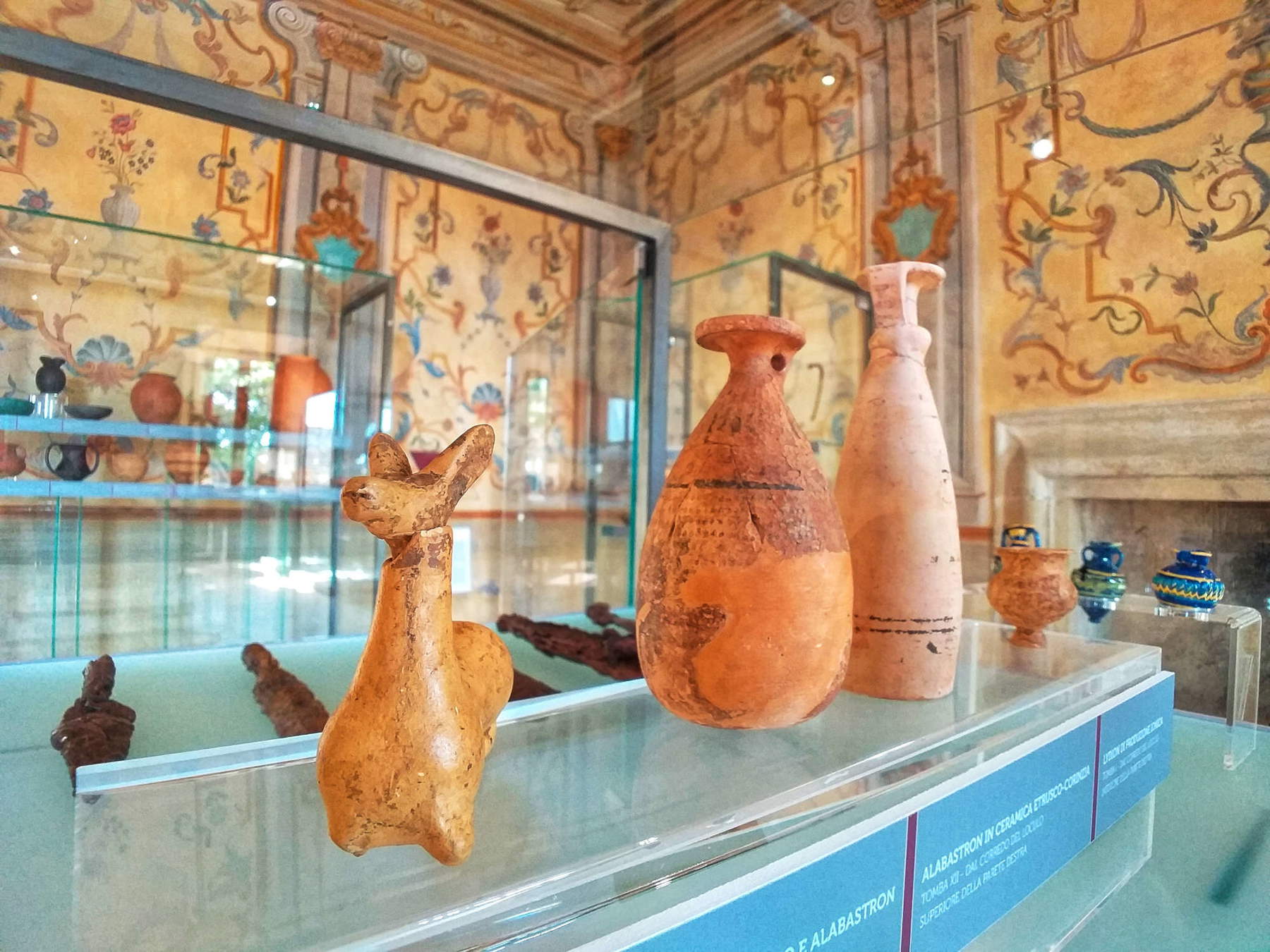As of March 16, the Chariot of Eretum, the invaluable Sabine chariot whose remains were smuggled into Italy in the 1970s from an illegal excavation, will finally find a museum ready to welcome it. It is the Civic Archaeological Museum of Fara in Sabina (Rieti), which stands as one of the fundamental fulcrums for the in-depth study of the culture of the Sabines, since it holds artifacts from the two most significant centers of the Sabina Tiberina: Cures and Eretum.
Opened in 2001 inside the sumptuous Palazzo Brancaleoni, dating back to the Renaissance, this museum has seen a constant enrichment of its collections over the years, thanks to regular excavations conducted precisely in Cures and Eretum. The considerable increase in the material holdings necessitated the opening of new exhibition rooms over time: the Hall of Writing, dedicated entirely to the inscribed cippus found in the bed of the Farfa River, and the room devoted to Tomb XXXVI of Colle del Forno.
Just at this time, inside the museum, work is coming to a close on the final installation of another room, dedicated to a tomb whose grave goods played a central role in one of the most intricate and rocambolic events in the history of archaeology: that of Tomb XI of Colle del Forno, better known as the Tomb of the Chariot. The ancient Sabine city of Eretum is mainly known for its necropolis located at Colle del Forno, identified on a hill in the locality of Casacotta, in the territory of Montelibretti (Rome). This area was long used for horse breeding by the Royal Army and later, since the 1970s, became a research site managed by the CNR. It was precisely during the installation of laboratories for scientific research that Tomb XI was discovered and looted by clandestine individuals, thus starting its journey into the antiquities market.


 The Civic Archaeological Museum of
The Civic Archaeological Museum ofTomb raiders had already made most of the chariot’s remains disappear after a clandestine excavation in 1970, following which much of the Tomb XI’s grave goods went missing on the illegal antiques market. Most of the pieces were purchased by the Ny Carlsberg Glyptotek in Copenhagen, after which, in 1979, archaeologist Paola Santoro began to suspect that the artifacts on display in Denmark came from the tomb (Santoro was a research manager at the CNR, and the CNR did not initiate its own research on Tomb XI, unfortunately, until after it was ravaged by grave robbers: the discovery of the clandestine excavation was in fact in 1973). Incidentally, the CNR was already in possession of some materials that had survived the looting. Only in 1995, however, was it possible to compare the pieces in the CNR’s possession with the “Danish” ones, certifying the certainty of their provenance: later, the Carabinieri, in the course of investigations into the activities of one of the most notorious traffickers in antiquities, Giacomo Medici, managed to find all the documentation on the smuggling of those materials. The ensuing international legal proceedings that arose from the evidence gathered by scholars and the military ended only in 2016, with the return of the wagon to the Italian state.
Following the sacking of Tomb XI however, regular excavations were started throughout the 1970s, which allowed the site’s relevance to be attributed to Eretum, later resumed in the 2000s, completing the historical and archaeological picture of the necropolis.
The affair has been long and extremely complicated, but finally, after the looting perpetrated by clandestines and the subsequent discovery of the exhibits at the Ny Carlsberg Glyptotek in Copenhagen, followed by their recovery by the Italian authorities, the Civic Archaeological Museum of Fara in Sabina is preparing to open its doors to permanently welcome the precious finds from Tomb XI. Work inside the museum began in March last year, and now the possibility of admiring these treasures in their original context is imminent.
Once it was ascertained that the finds belonged to the Sabine civilization, their return to the Sabine was possible: first through participation in an exhibition held in Rieti (May 8 to October 10, 2021) at Palazzo Dosi-Delfini, and now within the context of the museum in Fara in Sabina, where the grave goods from the other tombs of the necropolis of Eretum have long been on display. This achievement was made possible thanks to the collaboration between the Municipal Administration of Fara in Sabina, the Soprintendenza Archeologia, Belle Arti e Paesaggio for the Metropolitan Area of Rome and the Province of Rieti, as well as thanks to the technical-scientific contribution of various professionals. Therefore, the big day, Saturday, March 16, when everyone will once again be able to marvel at the sight of the stupendous grave goods of Tomb XI, this time on a permanent basis, is getting closer and closer.
 |
| The Chariot of Eretum, returned to Italy in 2016, finds a home: the Civic Museum of Fara in Sabina |
Warning: the translation into English of the original Italian article was created using automatic tools. We undertake to review all articles, but we do not guarantee the total absence of inaccuracies in the translation due to the program. You can find the original by clicking on the ITA button. If you find any mistake,please contact us.